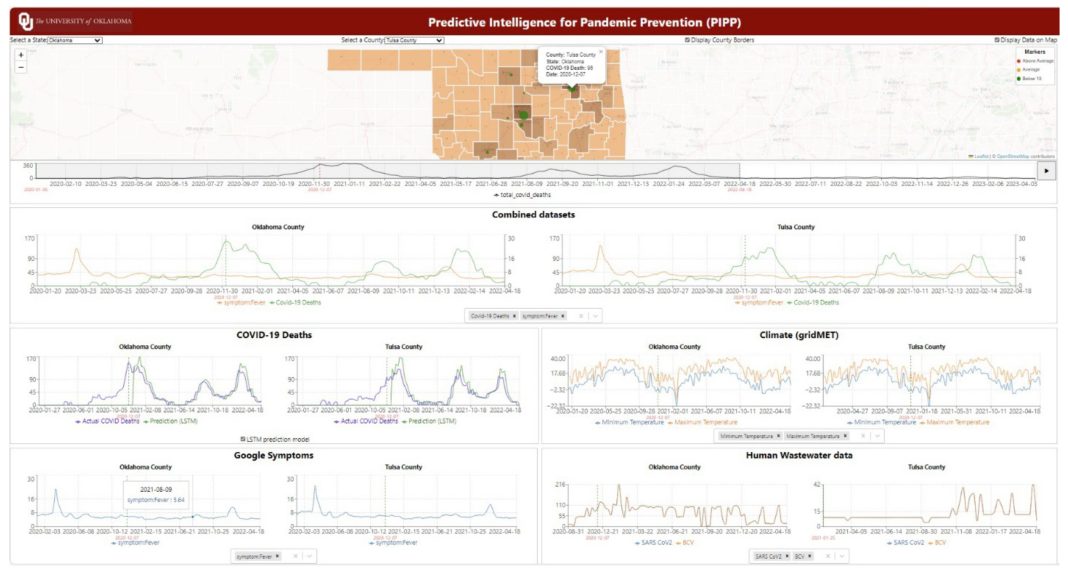Surveillance data plays a crucial role in understanding and responding to emerging infectious diseases; here, we learn why adopting a One Health surveillance approach to EIDs can help to protect human, animal, and environmental health
Over 75% of emerging infectious diseases (EIDs) affecting humans are zoonotic diseases with animal hosts, which can be transmitted by waterborne, foodborne, vector-borne, or air-borne pathways. (7) Early detection is important and allows for a rapid response through preventive and control measures. However, early detection of EIDs is hindered by several obstacles, such as climate change, which can alter habitats, leading to shifts in the distribution of disease- carrying vectors like mosquitoes and ticks. This can result in diseases such as malaria, dengue fever, and Lyme disease becoming more common in areas with established transmission or spreading to new areas entirely. (4) Environmental changes such as deforestation and urbanization disrupt ecosystems, increasing the likelihood of zoonotic disease spillover from wildlife to humans. In addition to working at the interface of these changes, detection and tracking of EIDs also requires sharing and standardization of complex data and integrating processes across different regions and health systems.
Applying One Health Surveillance to EIDs
One Health surveillance is a collaborative approach that recognizes that the health of humans is connected to the health of animals and the environment. This approach can create a better understanding of infectious diseases and, ultimately, a better foundation for their control and prevention. The One Health approach relies on diverse data sources (e.g., clinical and epidemiological data, veterinary records, wildlife monitoring data, climate and geospatial data). Because of their strong link to animals, climate, and the environment, understanding and monitoring EIDs requires adopting the One Health concept. Accordingly, One Health surveillance has been applied to several EIDs. For instance, in the case of West Nile Virus, the One Health approach consisted of integrating data from human clinical cases, veterinary records of affected animals, and environmental factors to understand the spread of the virus and devise comprehensive strategies for surveillance and response. (6) Overall, there is solid evidence that a comprehensive One Health surveillance system’s interconnections offer more effective and timely detection and response.
By utilizing a One Health analytics approach, we can understand zoonotic diseases and their dynamics better, as well as facilitate information exchange and intervention strategies, ultimately contributing to improved health outcomes. (2) As we monitor animal health, we can identify potential zoonotic threats before they spill over to human populations. (5) Finally, One Health surveillance systems allow for more accurate predictive modeling that allows for better understanding and preparation of disease spread. (1)
A collaborative approach
Promoting collaboration among veterinarians, medical professionals, environmental scientists, and public health officials to enhance surveillance and response efforts is essential for the One Health approach to work in practice. Through this collaboration, a common understanding of collecting (surveillance) data, interpreting it, and ultimately acting on it is also required. Given the variety of data sources across different spatial and temporal scales in One Health data, integrated visual analysis tools are needed for effective analysis, correlation, correlative, predictive, causal analysis, understanding, and decision-making for effective management and response. (3) In addition, to make these data useful, various transformations and integrations, such as data cleaning and validation, standardization, integration, geospatial and temporal analysis, predictive modeling, and visualization, are necessary to ensure they can be effectively analyzed and used for decision-making (Figure 1).
In collaboration with public health officials, our project team has developed a One Health visual analytics system combining diverse health surveillance data sources. Our main objective with this system is to utilize a range of datasets and visual analytics methods to gain insight into and address outbreaks of infectious diseases, using the COVID-19 pandemic as a case study. The data sources in our project focus on proactive surveillance and timely public health interventions, utilizing One Health data encompassing humans, animals, weather, and geospatial information. Specifically, the data are derived from various sources, including traditional disease surveillance in humans and animals and emerging data streams such as Google Trends, wastewater surveillance, and Breathomics. These data are combined to investigate the correlation between human infectious disease outbreak signals and corresponding signals from the other One Health sectors, creating an effective and actionable visual analysis environment for decision-making and intervention.
References
- Afzal, Shehzad and Maciejewski, Ross and Ebert, David S. 2011. “Visual analytics decision support environment for epidemic modeling and response evaluation.” 2011 IEEE conference on visual analytics science and technology (VAST), IEEE, 191–200.
- Chen, Kow-Tong. 2022. “Emerging infectious diseases and one health: implication for public health.” International Journal of Environmental Research
and Public Health (MDPI) 19 (15): 9081.
doi: https://doi.org/10.3390/ijerph19159081. - Dey, Samrat K and Rahman, Md Mahbubur and Siddiqi, Umme R and Howlader, Arpita. 2020. “Analyzing the epidemiological outbreak of COVID-19: A visual exploratory data analysis approach.” Journal of medical virology (Wiley Online Library) 92 (6): 632–638.
- El-Sayed, Amr and Kamel, Mohamed. 2020. “Climatic changes and their role in emergence and re-emergence of diseases.” Environmental Science and Pollution Research (Springer) 27 (18): 22336-22352.
- Maciejewski, Ross and Afzal, Shehjad and Fairfield, Adam J and Ghafoor, Arif and Ebert, David S and Ayyaz, Naeem and Ahmed, Maaz. 2013. “Enabling syndromic surveillance in Pakistan.” Online Journal of Public Health Informatics 5 (1).
- Naveed, Ahsan and Eertink, Lianne G and Wang, Dan and Li, Feng. 2024. “Lessons Learned from West Nile Virus Infection: Vaccinations in Equines and Their Implications for One Health Approaches.” Viruses (MDPI) 16 (5): 781.
- Ogden, NH and AbdelMalik, P and Pulliam, JRC. 2017. “Emerging Infections: Emerging infectious diseases: prediction and detection.” Canada Communicable Disease Report 43 (10): 206. doi: https://doi.org/10.14745%2Fccdr.v43i10a03.

This work is licensed under Creative Commons Attribution-NonCommercial-NoDerivatives 4.0 International.


